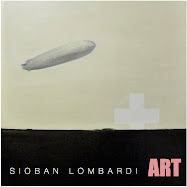
Ree Morton: At the Still Point of the Turning World currently on view at The Drawing Center, offers a glimpse into the drawing practice of the late artist better known for her influential sculpture and installations.
Though sculpture is included in the exhibition, one might fail to notice the larger, three-dimensional forms. Those who do might experience a measure of irritation over these work’s more heavy-handed intrusion into the lyrical, modest and highly personal drawings that span the length of the artist’s all-too-short career.
Made more than 30 years ago, Morton’s work is unusually refreshing and current, lacking the “looking for Mr. Goodbar” aesthetic that dates the work of some of her feminist contemporaries. Perhaps this is due to the fact that Morton had already exorcised much of the baggage associated with feminist art of the 1970’s. Having married, raised children and then divorced in order to completely engage in her art making practice, Morton was able to incorporate these experiences into the broader pool of dream, spontaneity, myth and poetry.
In addition, Morton demonstrated an ease and faculty with materials at hand, freeing her from any sort of material carbon dating and allowing her obviously rich imagination to roam freely through her work. In works such as her series of Untitled Line Drawings, 1970, one is reminded that a static line on paper can demonstrate tension, temperament, movement and space. Though heavily influenced by the drawings of Eva Hesse, Morton’s drawings possess a far more organic and ephemeral presence than structural one.
Morton’s line quality and spare execution reveal with simplicity and candor, the benefit of making drawings discreet from preparatory practice and an artist’s principal project. Her works also fortify the notion that the stuff of inspiration is not limited to spectacle and conflict, but can still germinate within the antiquated realms of music, nature, myth, literature and dreams.



No comments:
Post a Comment